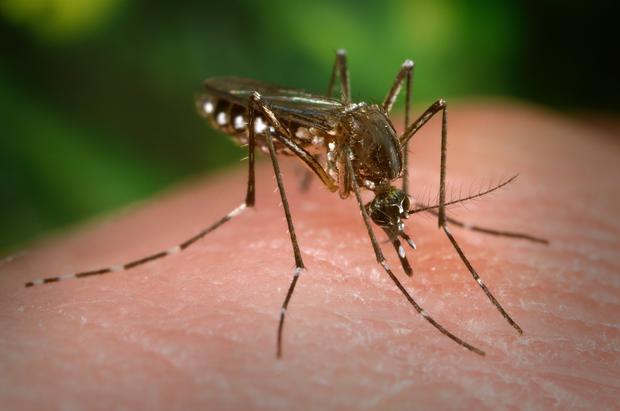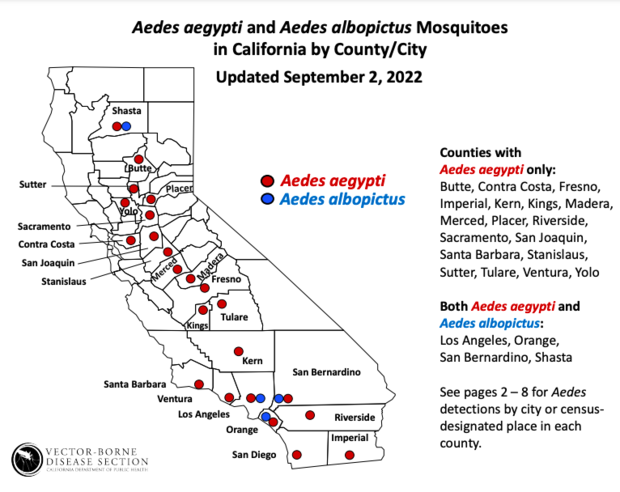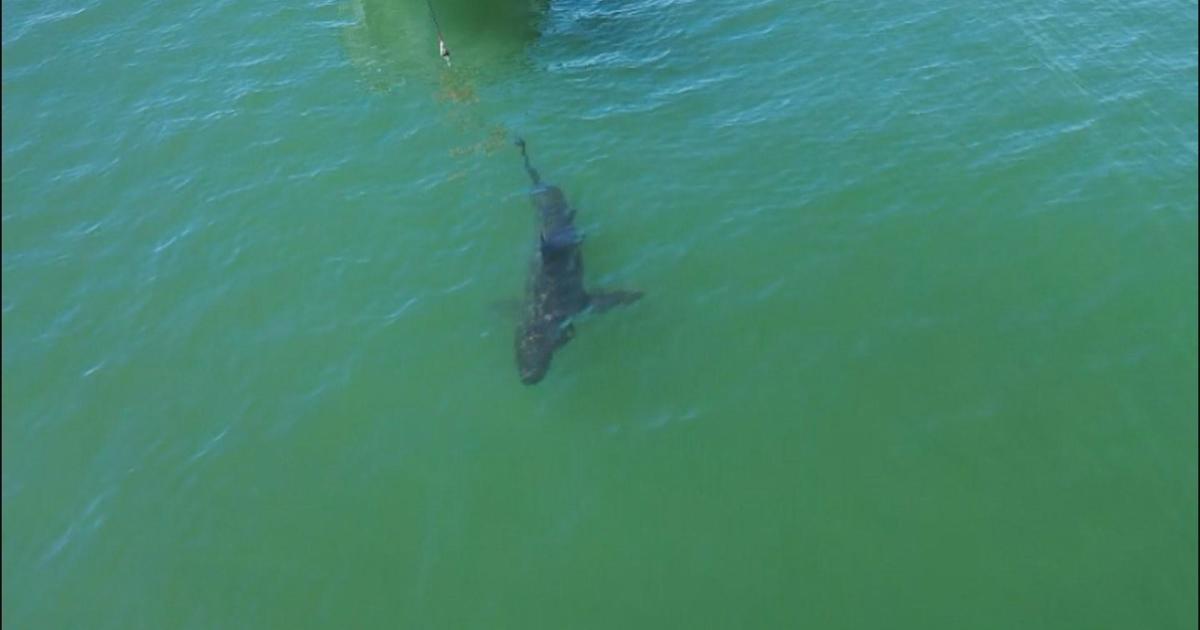Invasive "ankle-biter" mosquitos plaguing Southern Californians
An invasive genus of mosquitos have made their way to Southern California, leaving a trail of irritation and itchy bites in their wake.
The Aedes mosquito, originally located in tropical climates, have been found on nearly every continent in the world, and are believed to have arrived in California more than 10 years ago via cargo ship.
This summer, it appears they've migrated in mass to the Southland, spreading throughout the San Fernando Valley, Inland Empire and Greater San Diego.
They're small and black, covered with white stripes on their legs and body.
Unlike the mosquitos most people have grown accustomed to, close to larger bodies of water like lakes or streams, often lingering in warmer places, Aedes enjoy shady spots and can breed with a minimal amount of water — even the quarter inch of water in the base of a potted plant or rain gutter.
On top of that, Aedes are notably more aggressive. They prefer to bite humans, over other mammals or birds, and their bites can go through clothing. They'll often strike rapidly instead of just once.
They also don't stick to the traditional early morning/early evening habits of other mosquitos, on the hunt throughout the day.
"They're very aggressive, they're daytime biters, and they can survive on the smallest amount of water," said Anais Medina Diaz, who works with Los Angeles County Vector Control.
She said that if you find yourself getting bit often, there's likely a source close-by that you can't even notice. Regardless, those small breeding spots — either inside or outside — can turn into a breeding ground that could produce hundreds of new mosquitos.
"They like to hover around in shady places, so if you want to go outdoors and relax, and your patio furniture is next to some plants, that's probably where your mosquitos are too," Medina Diaz said.
While more invasive, Aedes are poor fliers, hence the "Ankle-Biters" nickname. Most Angelenos will have noticed that the majority of their bites are on their legs, since they hover above the ground.
Aedes have been known to transmit diseases like yellow fever, dengue and Zika, but they haven't been linked to the West Nile Virus, which has been located in Los Angeles County in 2022.
While irritating, officials don't consider the bloodsuckers to be an immediate cause for concern, and in the meantime are advising residents to stock up on bug spray and hope for cooler weather, as they traditionally stick around until the end of October.





